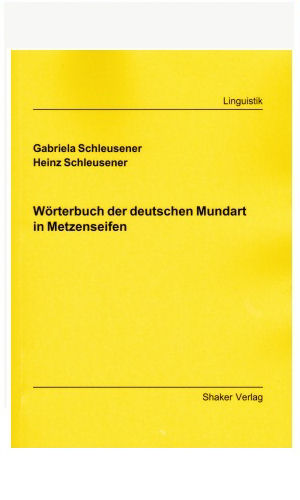

Willkommen auf der genealogischen und historischen Website von Metzenseifen
|
|
|
|
|
|
|
|
|
|
||||||||||||||||||||||||||||||||
| Kultur | |
|
|
Metzenseifner Mundart |

|
Die deutsche Mundart - das Mantakische |
|
|
Metzenseifner Literatur |

|
Schriftsteller u. Wissenschaftler aus Metzenseifen |

|
Publikationen Metzenseifner Autoren |

|
Literatur über Metzenseifen |

|
Stories aus Metzenseifen |
|
|
Der Autor Josef Roob |

|
Josef Roob - Auszüge aus dem Schaffen des Autors |

|
Josef Roob - Über die Metzenseifner Hammerschmiede |
|
|
Metzenseifner Kunst |

|
Künstler aus Metzenseifen |

|
Bilder Metzenseifner Künstler |

|
Bilder anderer Künstler |

|
Das GALERIE CAFE |
|
|
Sonstiges |

|
Metzenseifner Rezepte |
| Die deutsche Mundart - das Mantakische | |
|
Die Einwohner beider Metzenseifen sprechen einen Dialekt, der mantakisch genannt wird. Anfang des
Jahres 2013 wurde ein derartiges Wörterbuch veröffentlicht. Das Buch
Für die in Metzenseifen gesprochene deutsche Mundart existiert auch eine eigene Website: www.mantakisch.de. Dialektbeispiele können Sie sich hier anhören. Das unveröffentlichte Script von Ernst Tomasch 'Die Metzenseifner Mundart - Versuch einer mantakischen Grammatik' beschreibt die mantakische Grammatik aus der Sicht eines Nicht-Germanisten. |  |




